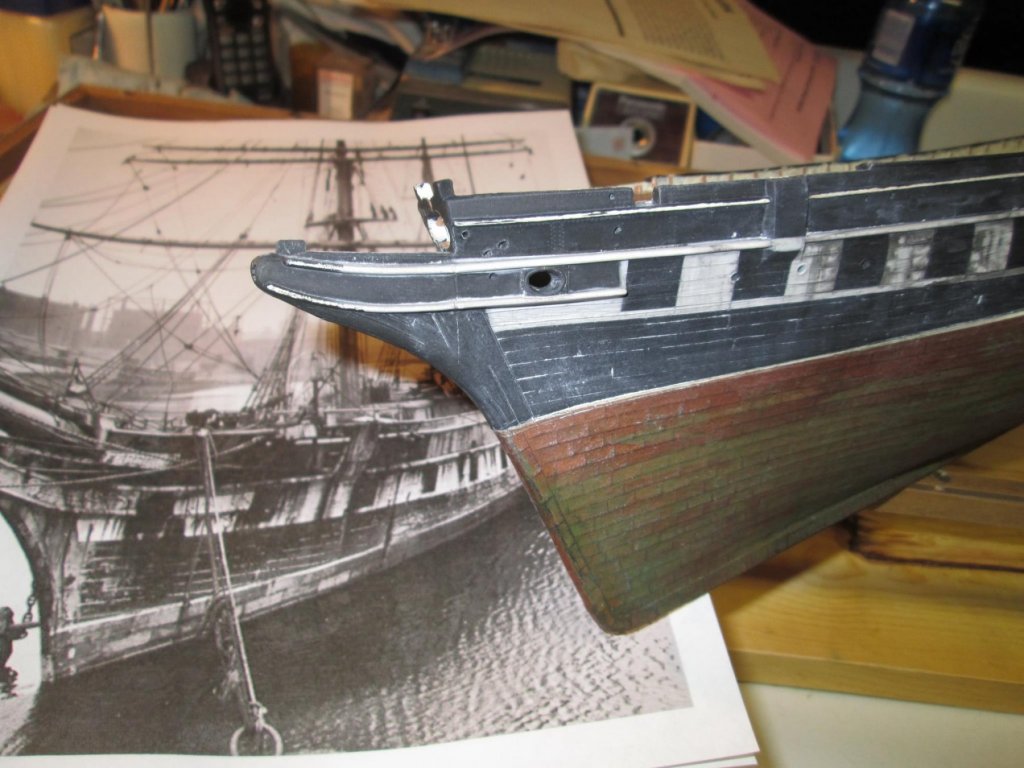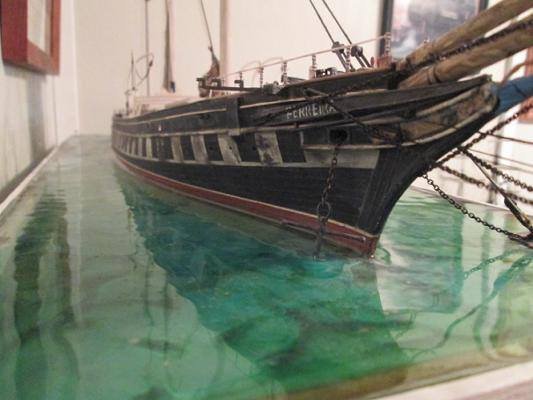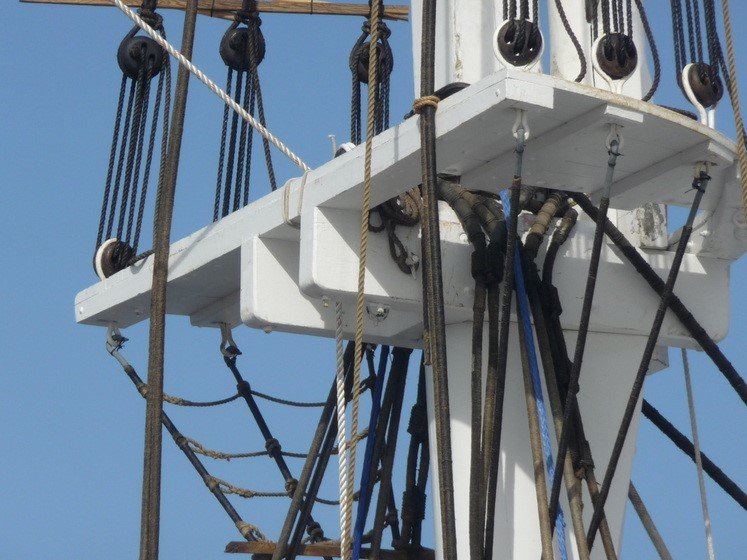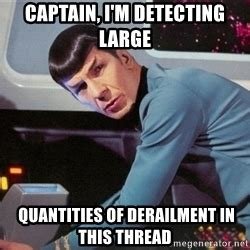-
Posts
5,502 -
Joined
-
Last visited
Content Type
Profiles
Forums
Gallery
Events
Everything posted by rwiederrich
-
- 1,208 replies
-
- great republic
- clipper
-
(and 1 more)
Tagged with:
-
Thanks Popeye. Ed's method of fabrication is just not possible at this scale. I even tried it. I'm agreeable to just a simulation. I try to scratch build most things...but as is my custom I love modifying someone else's engineered stuff to suite my needs. I got my chain from, Cast your anchor.com Rob
- 1,208 replies
-
- great republic
- clipper
-
(and 1 more)
Tagged with:
-
If Ed is half the expert of Clipper rigging and architecture as he is a master of modeling technique and skill, he will respectfully accept any criticism of his creations(which he has). The smartest expert is the one who treasures challenges to his expertise. And since I see no hands on experts who sailed on clipper ships...the best we can be is an interpreter of history with many holes in it. I believe Bob's *challenge* was not intended to belittle or lower Ed's expertise......but more to the point that some physical dynamics of function might have been overlooked. No one is perfect. Personally I appreciate Ed's wonderful work...even though I may not do things such as he did...but that is not the point of the Log. It's to enjoy and engage in his wonderful creation. Rob
- 3,618 replies
-
- young america
- clipper
-
(and 1 more)
Tagged with:
-
Apart from blatant errors or scale issues....my criticisms generally lay dormant......Cuz... I'm generally a lazy modeler and another's models *clean* construction techniques generally trump my critiques. Rob
- 3,618 replies
-
- young america
- clipper
-
(and 1 more)
Tagged with:
-
I agree ir3...it can be nearly impossible to fabricate a model of a vessel as it was originally created from this limited and somewhat diverse time frame. Changes were happening so fast as were the hull designs that a truly accurate representation is probably very difficult. Now, unless you are addressing some blatant errors or scale issues....I would defer to the most ardent experts who wrote on the subject...Underhill, Crothers, Campbell...etc. Somethings for representation purposes just have to be accepted. Rob
- 3,618 replies
-
- young america
- clipper
-
(and 1 more)
Tagged with:
-
Masterful job Ed, as usual. Talking about gaffs...will you be adding the pennant gaff between the mizzen spreaders? I'm wondering...what era have you decided to model YA...I don't recall...I'm sure you mentioned it earlier? If later...she didn't possess either fore or main gaffs from what I gather? Rob(2 thumbs waaay up)
- 3,618 replies
-
- young america
- clipper
-
(and 1 more)
Tagged with:
-
Just tinkering today and I tested the iron sheet blocks on the lower topsail yard with 42 LPI chain. Everything went smoothly. These things are tiny...so is the chain. The actual sheet blocks are pretty small on the real yard, about the size of half the yards diameter. Underhills drawings demonstrate this. That is why...even in my scale..they were going to be pretty small...like grains of wheat. And chain has to thread through them smoothly and then be drawn down to a block and tackle purchase to the top. Like threading a needle. Rob
- 1,208 replies
-
- great republic
- clipper
-
(and 1 more)
Tagged with:
-
Spent some time today working on the foremasts yards. Making the parrel bands and lots of eye bolts. I'll begin to start installing the foot ropes and stirrups next. Once done I'll rig the yard blocks. I decided to add the sales after I finish up all the workings of the yards....just don't want to fight all that after the sales are set. Here is where I am today.
- 1,208 replies
-
- great republic
- clipper
-
(and 1 more)
Tagged with:
-
OC..I was thinking of using the powder and sealer on the entire hull...not just the deck. It gives the highlights that eludes to sun washed wood and greying that comes with it. Here is another example of the same model I did of the Ferreira (AKA Cutty Sark) I was mimicking the image of the severely weathered vessel...note the accompanying image. Rob
-
One thing you may try for a dusty old warn look is try dusting on a very light coat of odorless talk(Use a facial powder brush. I personally use cerium oxide powder. Then when the dusting settles into all the cracks..seal it all with some dull coat. See the effect. Great job by the way on the Pearl... Rob
-
Exceptional rework Ed...I was floored to see the bent railing...but you repaired it masterfully as well as the entire redo Rob
- 3,618 replies
-
- young america
- clipper
-
(and 1 more)
Tagged with:
-
The image does show rigging in many stages of completion...however....it is the depiction of the black lanyards that drew my attention to point out that even these hired naval rigging architects understood these items had to be identified...even if it meant using modern synthetic material to mimic tarred rope. When they re-rigged the Constitution...their Naval architects deemed it necessary to rig the lanyards with black rope. I can't imagine they could get that detail incorrect, if it were not so. Rob
- 3,618 replies
-
- young america
- clipper
-
(and 1 more)
Tagged with:
-
Bob....my own experiences mimic yours in but a smaller degree. I too spent many youthful days at the docks and yards talking to and getting information from old salts. My own travels abroad lent itself to gathering much on the subject. Thank you for being so clear and depictive. Personally, I have never rigged any vessel I have ever built with anything less then black lanyards......I used the time traveler analogy...because there are very few modelers who actually are aware factually of what you so accurately pointed out. The point is the truth could be readily identified by going back in time and seeing it for our selves. One other note....most of the time a ship being driven hard in heavy seas will keep her in bound deadeyes and their lanyards submerged...if they were not preserved they would not last. One good long voyage around the Horn could leave a vessel looking as if it had been sand blasted and painted with rust and decay. No wonder captains drove their crews to paint and tar the ships fittings, rigging prior to entering their destinations harbor. it was all about appearance.....to say, *look at how smart we look after sucha hard voyage*, and to impress the owners with the skill and prowess of the ship and her master. Rob
- 3,618 replies
-
- young america
- clipper
-
(and 1 more)
Tagged with:
-
The 42 lpi chain easily slides in from both sides. I think this will do at this scale. Rob
- 1,208 replies
-
- great republic
- clipper
-
(and 1 more)
Tagged with:
-
Now it gets attached to the yard band...the entire thing gets a coat of my world famous *It covers a multitude of sin* black paint.....and there I go. Ready to begin again and rigg more yards. Rob
- 1,208 replies
-
- great republic
- clipper
-
(and 1 more)
Tagged with:
-
Some fashioning with the grinder to turn the little piece of metal into a functioning sheet block. Drill a hole for the pin....which will secure it and attach it to the yard. Rob
- 1,208 replies
-
- great republic
- clipper
-
(and 1 more)
Tagged with:
-
That ridge with a little help from my 3D brain...bent over on itself..is the ticket. Now to cut several to work with. Rob
- 1,208 replies
-
- great republic
- clipper
-
(and 1 more)
Tagged with:
-
Yeah...I'm feeling much better thanks everyone. I spent some time making more sheet blocks and at this scale 1/8" wide...these little buggers are fun. Here are some images of the process. It all begins with the necessary metal...and that turned out to be file folder clips....one uses for medical records. Just a little ingenuity, cutting and drilling....and using the natural pre-machined bends of that material....I fashioned the very things I needed. Rob
- 1,208 replies
-
- great republic
- clipper
-
(and 1 more)
Tagged with:
-
That's what makes it all so magical. One persons brown is another persons black. So who is more accurate....I wonder? One thing is for sure......I have pages of data from your build and it aids me continually with my own. And that....my friend is wonderful. I wonder if these folks might think they are correct.
- 3,618 replies
-
- young america
- clipper
-
(and 1 more)
Tagged with:
-
It is unarguable that lanyards are for tightening the shrouds/back stays. Their appropriate tension is the goal to maintain erect, stable masts....and to counter the actions brought upon these members. One can say they are part of an immovable (set) system....others say they are available for adjustment due to warpage and or stretchage. I believe both notions are true. I also believe they had to be preserved in some fasion....to what extent can only been known by time travelers. Personally...I choose dark/black lanyards....for my esthetic eye as well as what I derive from thousands of images and paintings of the subject. Best part of all is that it is a subjective topic as is most of the finer details of these magnificent vessels. I stand behind Ed's conclusion for Ed and it works out wonderfully in the end. Rob
- 3,618 replies
-
- young america
- clipper
-
(and 1 more)
Tagged with:
-
I worked on the top gallant yard last night a bit...still need to add the sheet block to the lower topsail yard. Once I finish the royal yard I will then add the jackstays to both gallant and royal. Not yet decided if I will add all the yards and their lifts prior to stepping the mast. Just finish up the parrels for each yard, run the chair rope lifts(secure them), then step the mast...and then come back and rig the lower shrouds and lanyards. This method is quite new to me... but I have seen it done by other modelers. On the other hand....I like the idea of detailing the sail and her rigging to each yard prior to attaching them to the mast. I'll probably go that route. Later. Rob
- 1,208 replies
-
- great republic
- clipper
-
(and 1 more)
Tagged with:
-
Rigging suffered as much as the hull and fixtures of any Sea going, deep water carrier. Hemp rope became stronger and less flexible with introduction to salt water. This is why it is reasonable to assume the lanyards, once set, were weather proofed(By tarring). Once the hemp line absorbed moisture...it was nearly impossible to adjust it through the wooden holes of the Deadeyes. Lanyards are part of the standing rigging...rigging that generally is not intended to be regularly adjusted...hence the term *standing* or fixed. In later models cable and turnbuckles replaced hemp...holding fast the masts in their stepped attitude....resistant of any bi-lateral movement. Stays are used in similar fasion...to prevent for and aft movement. Like a bunch of guy wires holding erect the towering masts. If one is diligent and observant, early photographic and even paintings will give evidence of blackened lanyards...which are and have always been part of the *Standing* rigging...and that rigging was always preserved with leather and a varying viscus concoction, known as tar...not like the black sticky, gooey stuff we heat up and put on roofs/roads....but a material more like thick oil. Historically....tar-jacks were what they called sailors who had the nasty job of applying this dark black/brown material to the standing rigging and they were easily identified by the smears of the material all over their uniforms....as they attempted to wipe it off their hands. The Royal Navy had issues with this problem and tried uniform changes from white cotton to dyed dark blue to hide the tar on the sailors trousers. Rob
- 3,618 replies
-
- young america
- clipper
-
(and 1 more)
Tagged with:
-
The best thing about the *clipper* design or model as it was known, is that it was for ever evolving. Narely two were ever a like(American that is), because all aspects of them, from their hull design to the rigging was in constant flux....for ever being changed, altered, modified to gain that extra knot. To beat out the next guy. Great fortunes were made on their speculation. And very specific markets were driving their owners to challenge the builders to be specific in design and function...cargo capacity was exchanged for speed in some models. Howes Rig became the norm as other designs, like Forbes and Linnell's found less application. But if one simply scans the model and comes across a feature they are not aware of, they criticize, unbeknownst to them. It was falsely determined that once the design was *discovered*, designers would settle in and produce good quality vessels..being satisfied with such. This was not the case. Ed's fine example is only one of many examples of the clipper design. Masterfully replicated to the best of his ability and with the best knowledge known of the design. HATS OFF! Ed! Rob
- 3,618 replies
-
- young america
- clipper
-
(and 1 more)
Tagged with:
-
Renowned Marine expert Hervey Garrett Smith in his Book, *The Arts of the Sailor...Knotting, Splicing and Ropework*. Mimics your sentiment concerning shroud lanyards. Rob
- 3,618 replies
-
- young america
- clipper
-
(and 1 more)
Tagged with:
About us
Modelshipworld - Advancing Ship Modeling through Research
SSL Secured
Your security is important for us so this Website is SSL-Secured
NRG Mailing Address
Nautical Research Guild
237 South Lincoln Street
Westmont IL, 60559-1917
Model Ship World ® and the MSW logo are Registered Trademarks, and belong to the Nautical Research Guild (United States Patent and Trademark Office: No. 6,929,264 & No. 6,929,274, registered Dec. 20, 2022)
Helpful Links
About the NRG
If you enjoy building ship models that are historically accurate as well as beautiful, then The Nautical Research Guild (NRG) is just right for you.
The Guild is a non-profit educational organization whose mission is to “Advance Ship Modeling Through Research”. We provide support to our members in their efforts to raise the quality of their model ships.
The Nautical Research Guild has published our world-renowned quarterly magazine, The Nautical Research Journal, since 1955. The pages of the Journal are full of articles by accomplished ship modelers who show you how they create those exquisite details on their models, and by maritime historians who show you the correct details to build. The Journal is available in both print and digital editions. Go to the NRG web site (www.thenrg.org) to download a complimentary digital copy of the Journal. The NRG also publishes plan sets, books and compilations of back issues of the Journal and the former Ships in Scale and Model Ship Builder magazines.







